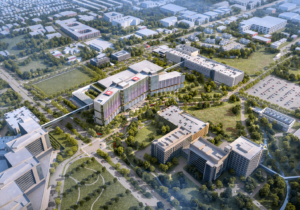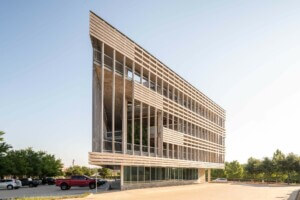Groundswell: Women of Land Art
Nasher Sculpture Center
2001 Flora Street
Dallas, Texas 75201
Through January 7, 2024
How to stage an exhibition for art so monumental that, as critic Lucy Lippard described it, its task is “to focus landscapes too vast for the unaccustomed eye to take in?” This observation was featured in Lippard’s 2014 book Undermining: A Wild Ride Through Land Use, Politics, and Art in the Changing West. While a laudable text, its reliance on artwork from male artists repeats traditional accounts of land art as defined by male-dominated exertions in the American West.
Groundswell: Women of Land Art at the Nasher Sculpture Center in Dallas, Texas seeks to correct this. Curated and developed over a seven-year period by Nasher assistant curator Dr. Leigh A. Arnold, Groundswell literally breaks new ground, presenting a survey of 12 American women artists who pioneered and expanded practices of land art.
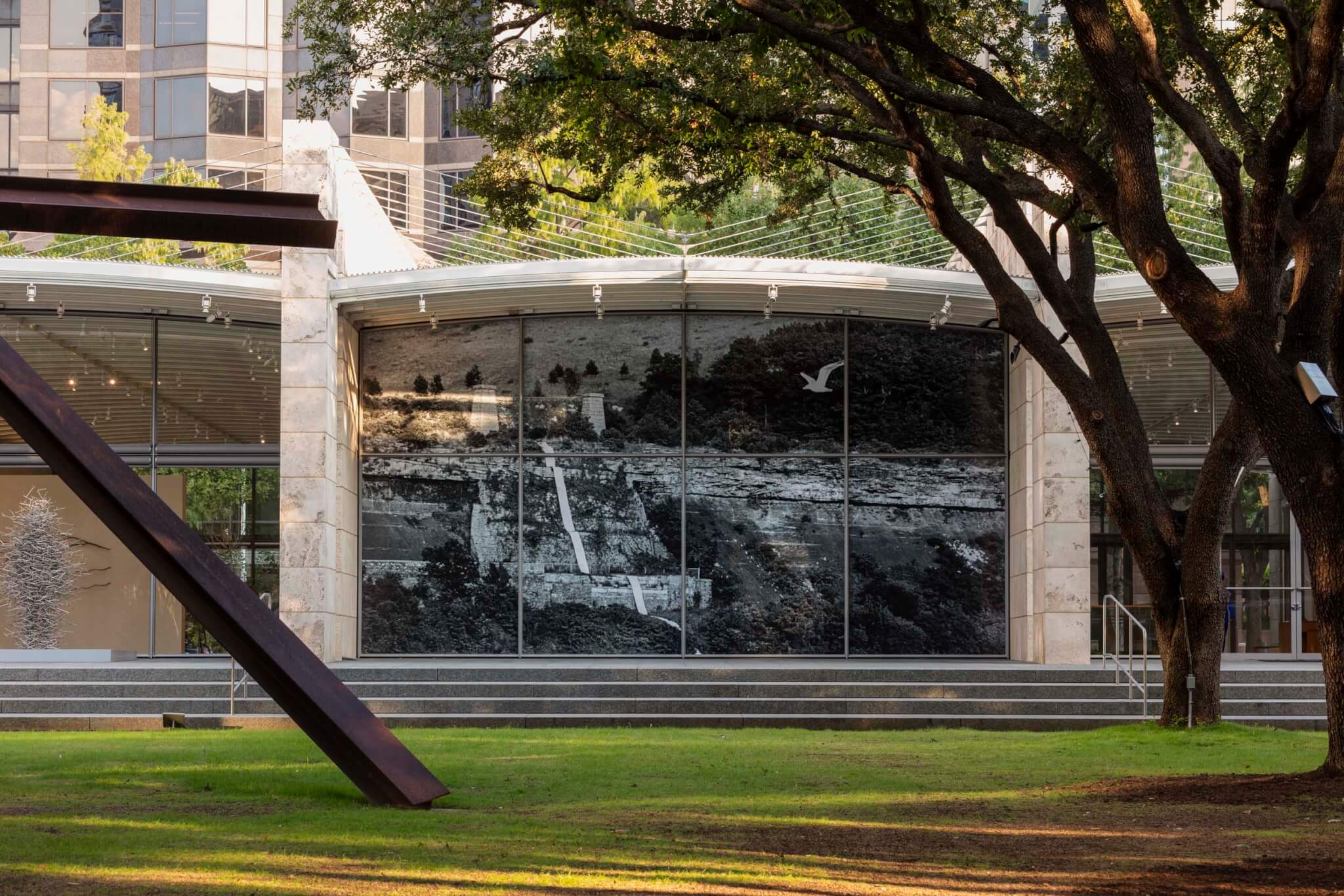
The show is retrospective, featuring work by the likes of Lita Albuquerque, Agnes Denes, and Mary Miss, who are now well into their seventies and eighties. Three others are included posthumously: Ana Mendieta, Nancy Holt, and Beverley Buchanan. While each of these artists have esteemed and long careers in the arts, we have never before seen an exhibition bringing this caliber of women artists and artworks, spanning four decades, together.
The featured artworks extend the chronology typically attributed to land art, which typically just spans the 1960s and 70s. However, Groundswell shows how the guiding principles of land art continued well into the 1980s and 1990s, and persists even today with new works.
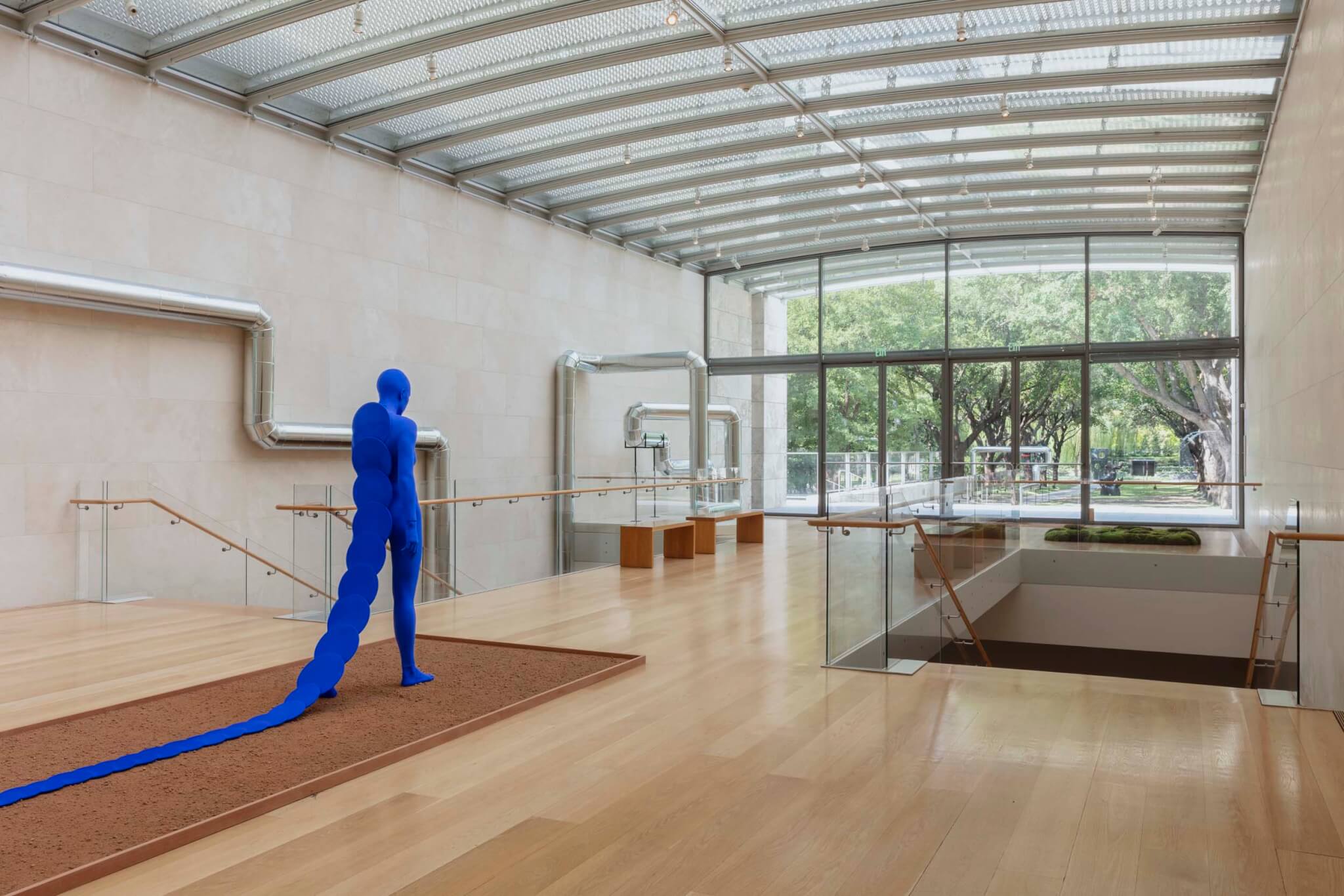
Upon arrival at the Nasher, the visitor first encounters Lita Albuquerque’s striding sculpture Najma Returns (Guardian of the Earth), a new work completed in 2023. Pigmented electric blue (think Yves Klein), an almost alien female shape bears a long trail of 33 solar disks acting as a spinal extension. Najma is the sculptural version of a character Albuquerque performed herself in Giza, Egypt in 2021. A mystical, imagined 25th-century astronomer, Najma enacts another aspect of land art, which offers “views into the cosmos, connecting the places where we stand with the places we will never stand,” as Lippard wrote. Najma connects also with Albuquerque’s early-career pieces like Malibu Line (1978), where she ephemerally deployed powdered pigment upon the ground.
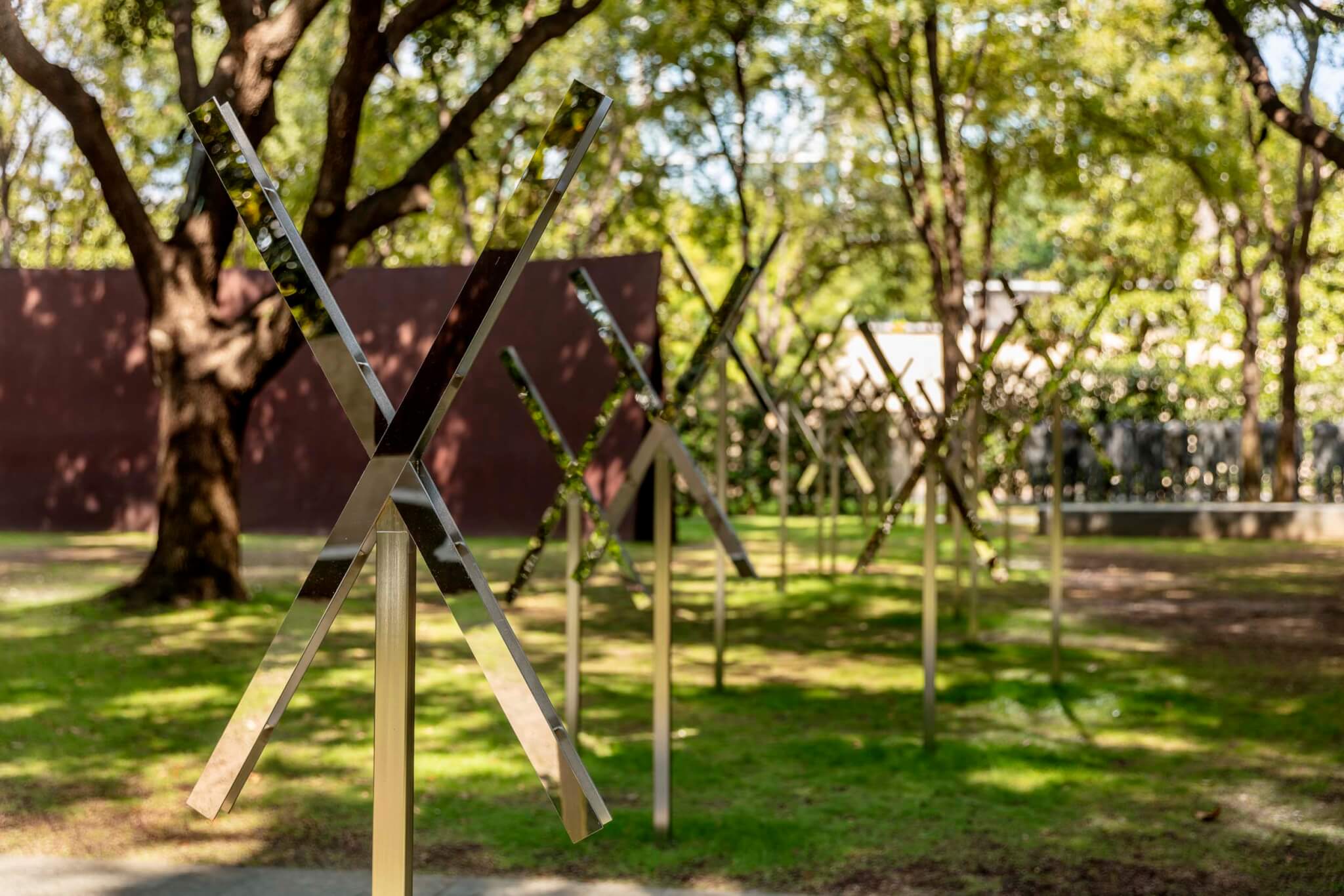
A special strength of Groundswell was the commissioning of new versions of historic artworks. Mary Miss’s installation in the Nasher sculpture garden, Stream Trace: Dallas Branch Crossing (2023), is one of these. Mirrored stainless-steel X shapes atop poles are planted to mark the path of a long-buried stream flowing underneath the museum. It elegantly embodies a key aspect of the artform, which Dr. Arnold borrows to title a chapter in the catalog: “Exceeding the Field of Vision.” Miss’s work and Arnold’s writing together remind us of the intersections land art can make not only with Indigenous heritage and ancient earthworks, but also with aspects of conceptual art and minimalism. Its wide-ranging connections may have contributed to the absence of sufficient research attention previously. As Dr. Arnold writes, “The vastness of the work and activities of women land artists exceeds our field of vision and has resulted in a scholarly oversight, rendering their work invisible because it could not be reduced to a single defining image or conform to a more concise and traditional narrative.”
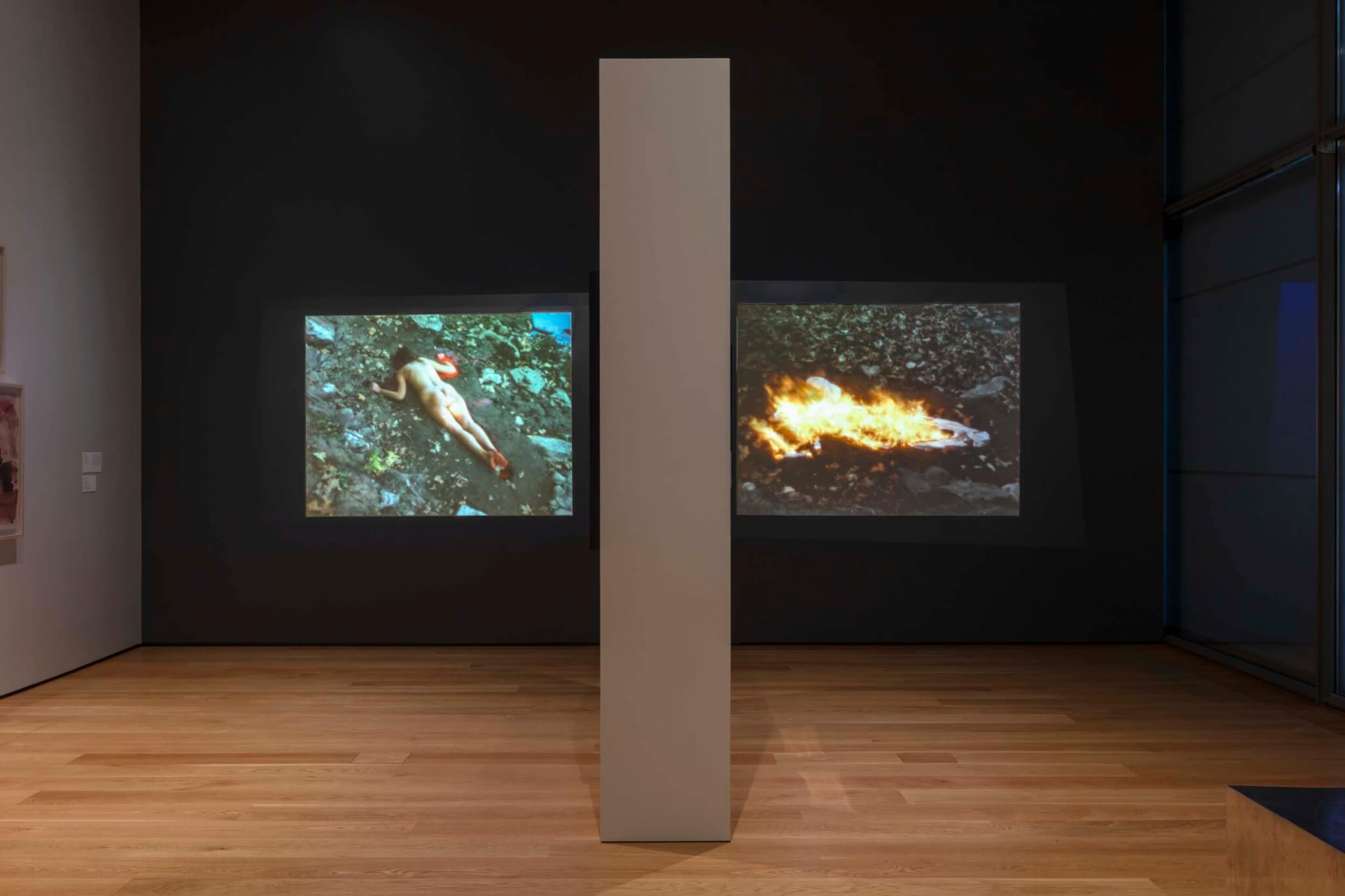
This also echoes in Nancy Holt’s Pipeline. Originally installed in 1986 at the Visual Arts Center of Alaska in Anchorage, Groundswell collaborated with the Holt/Smithson Foundation to present a new version. Exploring questions of oil dependence and resource extraction—activities that characterize economic drivers in both Texas and Alaskan territories. The piece employs industrial materials for sculptural ends, but positions it for ecological discourse. Perhaps best known for her work Sun Tunnels (1978), Nancy Holt and her partner Robert Smithson travelled the U.K. in the late 1960s exploring standing stones and ancient earthworks, which continued to resonate with them as they individually developed American projects in the 1970s.
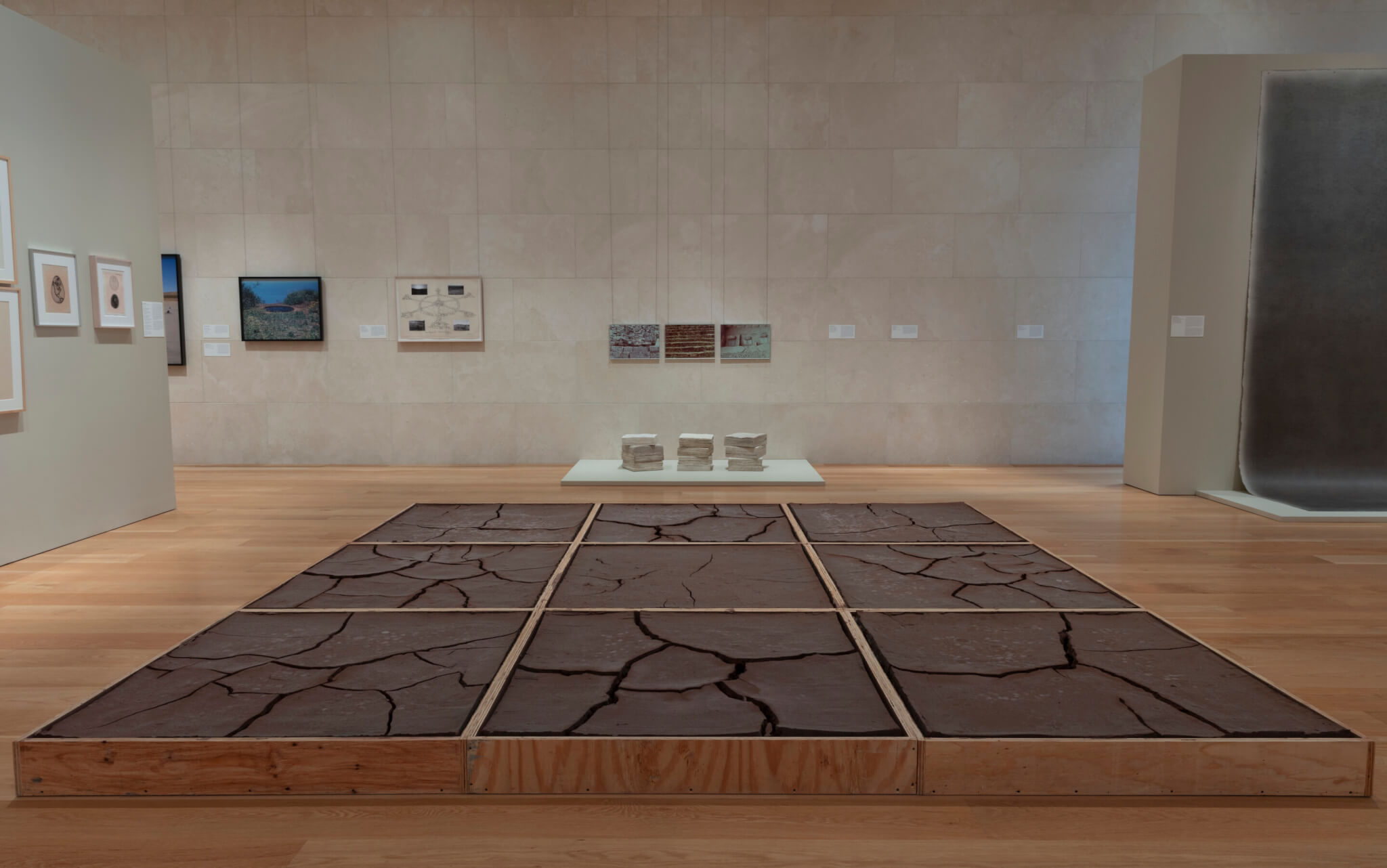
Alice Aycock’s love of architectonics is on full display in Groundswell through both photographs of early works and physical models and maquettes. But fully realized sculptures are also featured, ensuring visitors more than just documentation to experience. Aycock’s Clay #2 (1971) presents visitors a wooden grid holding squares of clay have settled, dried, and cracked, the expanse suggesting the terrain of an abandoned archaeological site. However, many of her site-specific projects, like those of other artists such as Jody Pinto and her Seeded Catherine Wheel (1982), only can be experienced via photographs, as they were destroyed at their locations years ago.
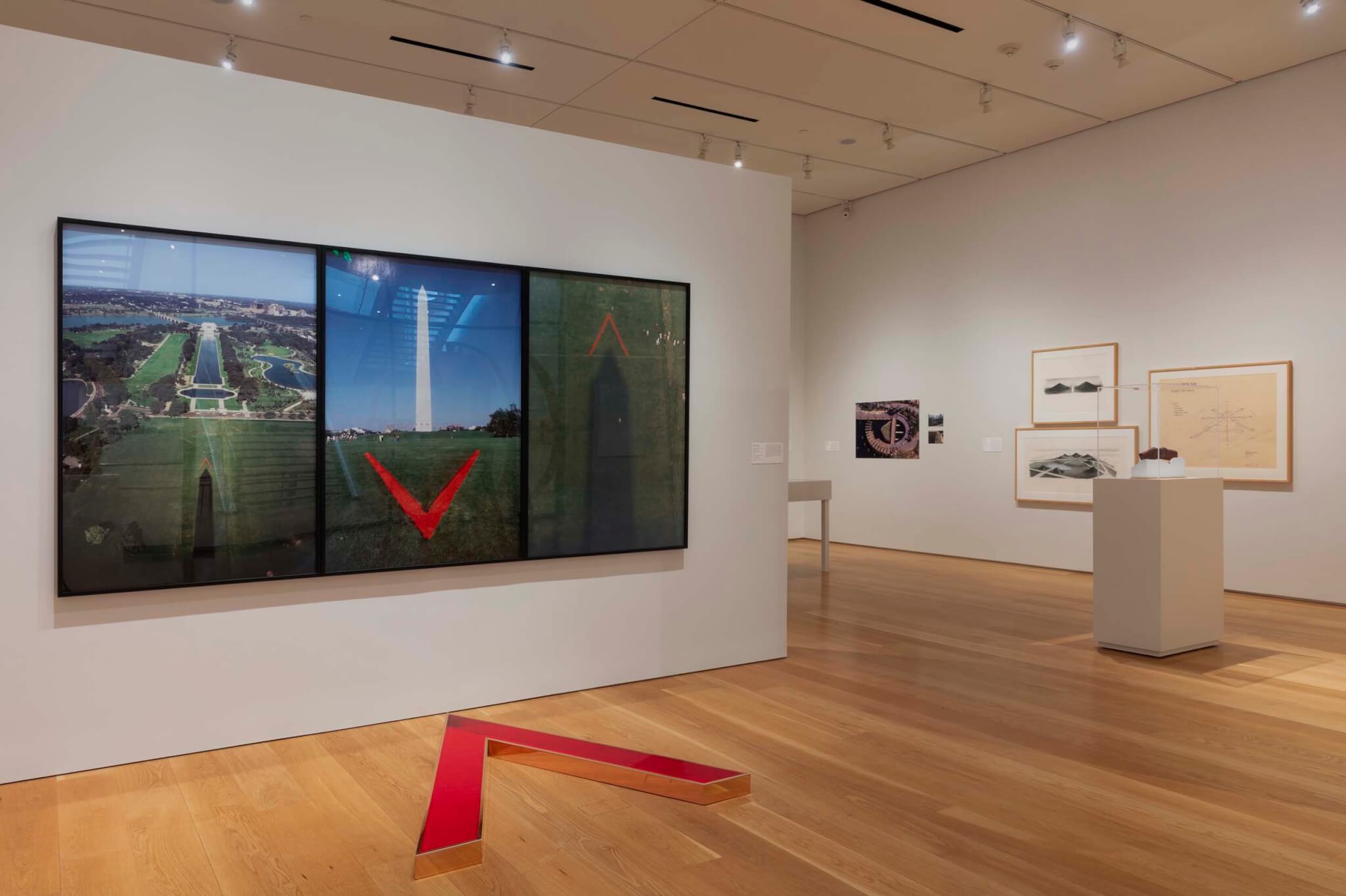
Several Groundswell artworks evoke architectural scales. Mary Miss’s Field Rotation, Governors State University, Illinois (1981) remains extant, but its larger-than-life excavations mean it field can only be appreciated fully through aerial photography. But others make it into the gallery: One inhabitable work on view is Meg Webster’s Long Gates (1984/2023). Using fragrant earth rammed into the standing shape of a cross, you’re encouraged to linger among the smells and spatial embrace, transcending the merely visual mechanisms of fine art.
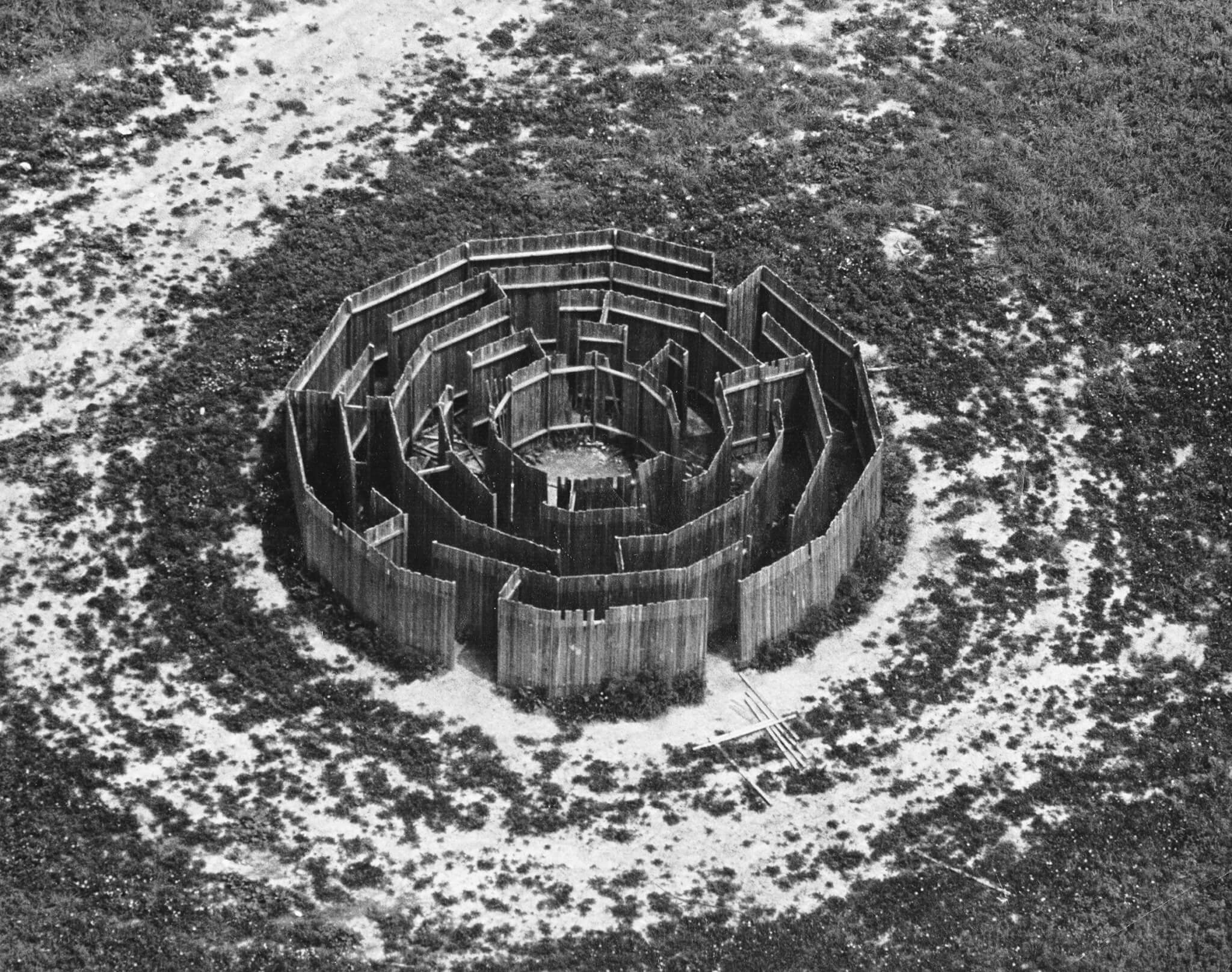
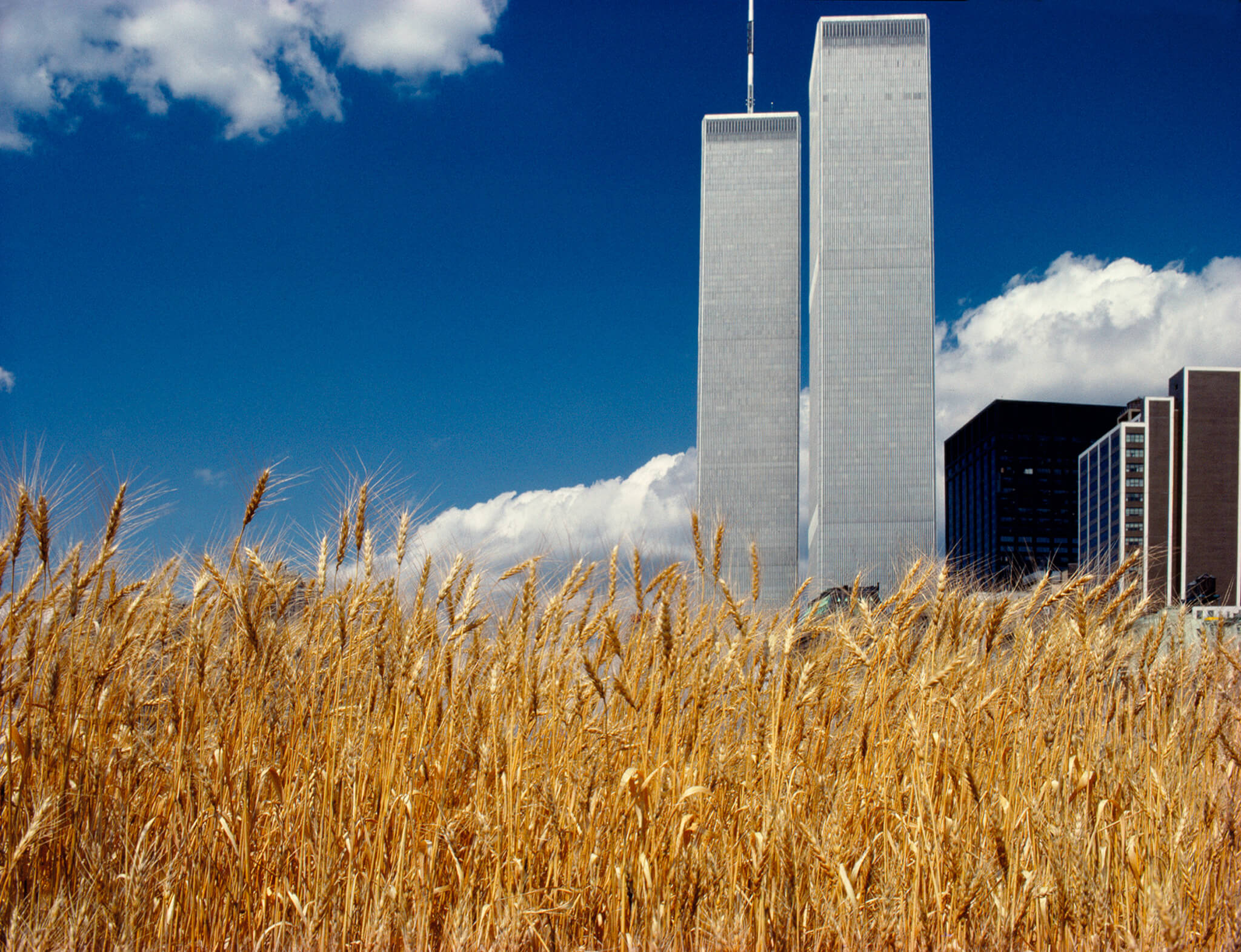
Groundswell’s artworks confront us with our impacts on the land. Whether we’re just being introduced to previously under-considered female artists or again facing iconic works like Ana Mendieta’s figurative impacts in Silueta or Agnes Denes’s planting and harvesting in Battery Park Landfill in Wheatfields – A Confrontation (1982), the show invites us to survey our extractions. The show asks, How do the structures we fashion age? With its expansive story, Groundswell is a landmark exhibition, one which should inspire others to spring forth, too.
Dr. August Jordan Davis is an art historian and curator, serving as department chair of art and art history and director of The Gallery at the University of Texas at Arlington.









